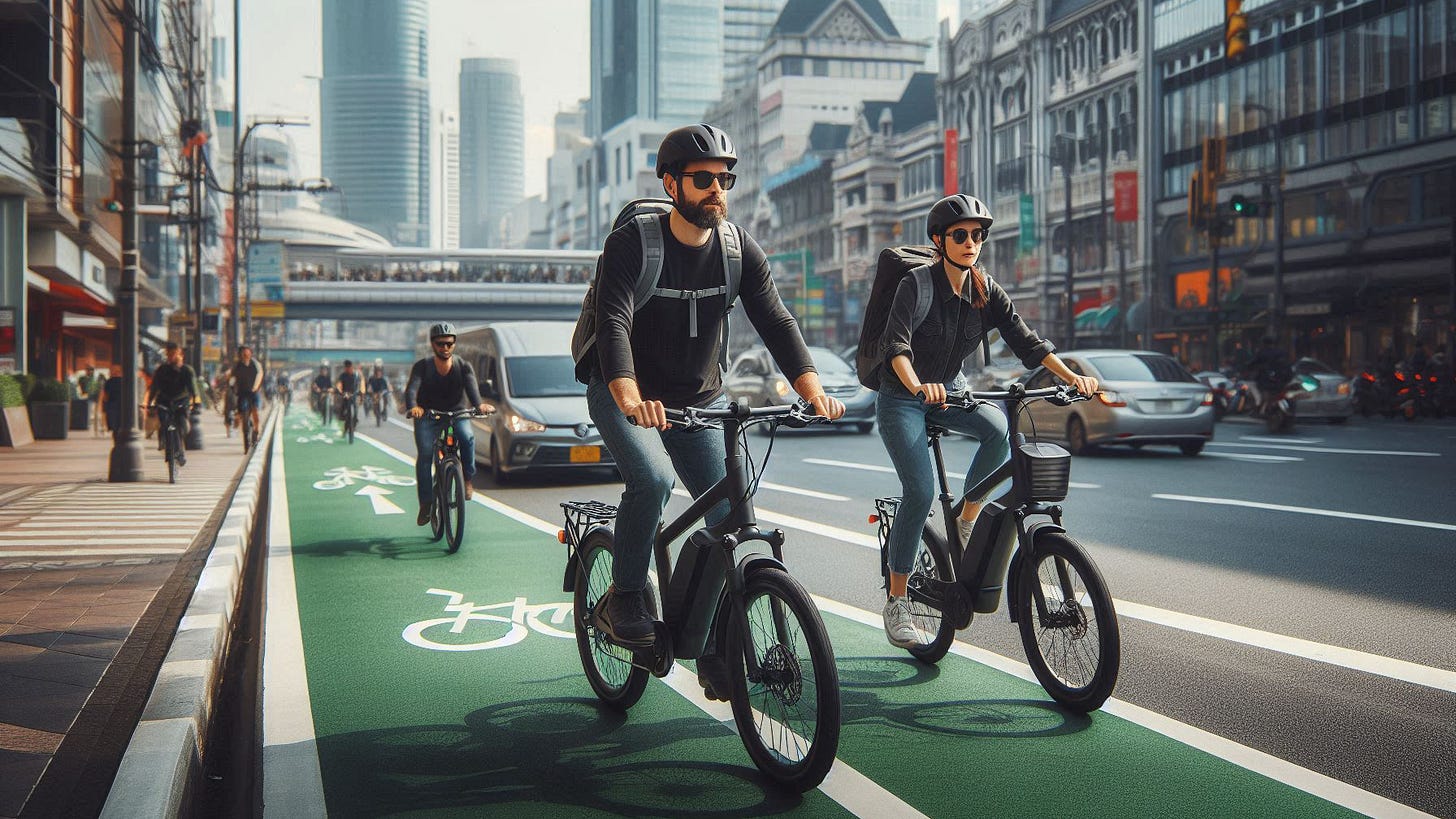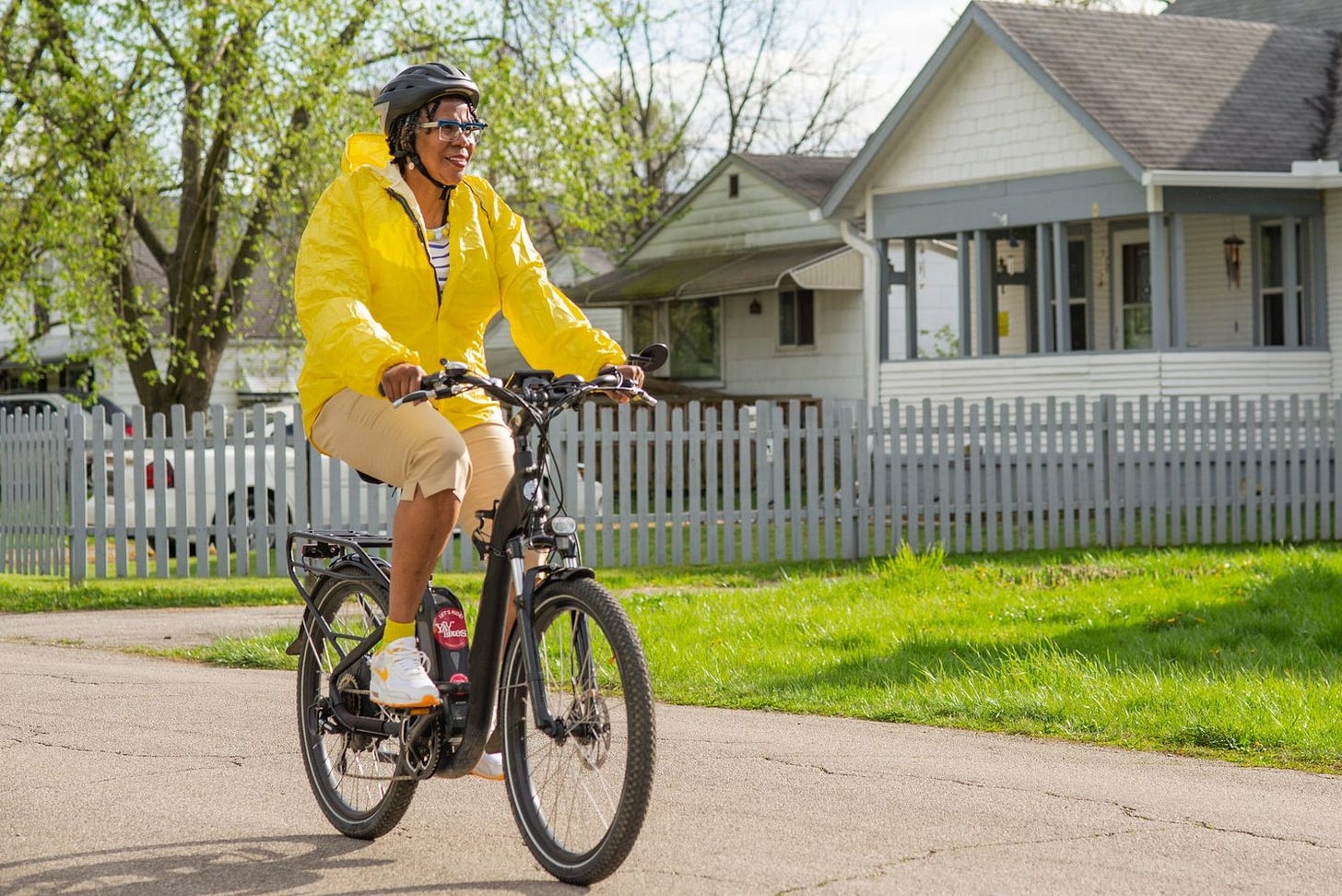The three-way affair with your car and e-bike
Living car-lite with an e-bike isn't cheating on the car
The affair
You slip out of bed unnoticed, dressing quickly in the dim light. Helmet secured, you hop onto your e-bike and into the cool morning air. The neon "Hot Now" greets you and you return home with a dozen warm glazed Krispy Kremes. The aroma of brewing coffee and warm sugar fills the air. Your spouse wakes unaware of your affair with the other one, your e-bike.
Finding your dual life
Grabbing your keys as you left the house was second nature for years. You never gave thought to the drive for groceries, commuting to work, or visiting the doctor. Seeing e-bikes around your neighborhood and on the streets sparked your interest—they looked like fun. Eventually, you bought one, persuading your spouse that it could transform your sedentary lifestyle into a more active one.
Something clicked. You realized you were having way more fun on your e-bike than chilling on the couch. And the best part? You could run errands or grab dinner without a hassle. This dual life is awesome!
Dual life exposed as car-lite
Your secret life couldn't stay hidden. Your spouse and kids joined you on bike rides to school and everyday tasks. Grocery shopping, dining out, and doctor appointments became bike-friendly trips. Your affair with the e-bike had a name, car-lite.
Car-lite is a lifestyle where you reduce your dependence on cars with other modes of transportation. This often is with public transportation. You may opt to cycle or walk for shorter trips. It doesn't mean giving up your car completely.
E-bikes and car-lite
Although e-bikes are popular, there's not been enough focus on how they can change our reliance on cars. Cities understand that reducing traffic congestion requires people to embrace alternative transportation such as bikes.
The classic pedal-powered bike has long been a viable transportation option. The rise of bike lanes, trails, and pedestrian and cycling infrastructure has created safe routes to work, school, the grocery, and more. An increasing number of people are embracing bikes and notably e-bikes as a practical mode of transportation.
American bicycle culture primarily revolves around recreation. For most Americans, cycling 5-10 miles to work seems challenging and not an feasible option. E-bikes offer a solution by expanding the cyclist’s and bike's role beyond leisure and making commuting by bike more doable.
The car-lite e-bike affair exposed
Momentum magazine recently highlighted a study examining the benefits of a car-lite lifestyle for Shanghai residents. Households reduced their car usage by 19%, opting for bikes for trips shorter than three miles. E-bikes emerged as a popular choice for non-commuting trips, particularly among elderly residents seeking greater mobility.
7 benefits of an e-bike car-lite affair
You save money. Reducing reliance on the car, maintenance, gas, and insurance expenses are reduced. Driving fewer miles extends the lifespan of your car.
You eliminate barriers. Hills and miles are no longer barriers. You can cover longer distances with less physical exertion on an e-bike. Reduced effort means less sweat and stress.
Age and cycling ability do not limit you. E-bikes make cycling more accessible to a wider range of ages and fitness levels.
You overcome e-bike shame. You may not require the full power of an e-bike. Even a little assistance can make a significant difference. Regardless of the level, the e-bike gets you to your destination. That is what counts.
You depend less on the car. You save money, protect the environment, and contribute to reducing traffic congestion on roads and highways.
It’s good for your health. Ditch the stress of driving and breathe in some fresh air on your bike. Your body, mind, and spirit appreciate that.
·You reclaim the joy of the ride. You get to see more of your neighborhood, city, and people. You are more connected on the e-bike than in the car.
Central Ohio's e-bike and car-lite affair
The car-lite transformation in China is not an isolated case. Communities worldwide recognize the benefits of e-bikes and invest in them as a crucial part of their transportation infrastructure. Columbus, Ohio launched Columbus Bikes, a successful pilot program in mid-2023 to assist residents in purchasing e-bikes, leading to its expansion in late 2023.
Columbus offers e-bike subsidies based on income, with a maximum of $150,000. The program also includes safety gear assistance. The program is doing great, and we can tell by what people who got the e-bikes say.
41% use their e-bikes to travel to work and 62% reported their e-bike ownership increased or somewhat increased access to work activities.
For some residents who do not own a vehicle, e-bikes allow for greater convenience, flexibility, and freedom.
82% are replacing car trips with e-bike trips, with some doing this out of necessity after their personal vehicle becomes unusable.
For those with disabilities or physical limitations, an e-bike can provide newfound access to exercise and amenities that were previously unattainable.
It’s huge because I’ve been able to go way further than I can any other way. I’m so excited because I’ve been able to do things that I haven’t done in 10-20 years. I went on a 15-minute bike ride with my son. We had so much fun, and I’ve never been able to do that with him. – Columbus Bikes program subsidy recipient
Car-lite and E-bikes future affair
E-bikes are changing how we think about cycling. Trails and streets are shared by pedal-powered bikes and e-bikes that challenge the traditional view of cycling, cyclists, and bikes. These challenges are part of cycling's growth and evolution. All bikes are a vital mode of both transportation and recreation.
E-bikes make moving to the car-lite lifestyle more accessible as demonstrated in Shanghai and Columbus, Ohio. The E-bike Act, a bill currently under consideration in the US Congress, aims to provide a tax credit for individuals who purchase e-bikes. By removing financial barriers, more households are able to adopt car-lite living.
As the car-lite movement expands, there is a rising demand for trails, bike lanes, and cycling amenities. Education and programs are essential in encouraging individuals who may not traditionally identify as cyclists to embrace biking. These initiatives should also promote a broader perspective on cycling, beyond its recreational aspects. Are we ready to take on these challenges to make car-lite a part of everyday life?
The world is better when the person on the bike sees themselves as something more than a cyclist. Think of what that means for you and our society.




